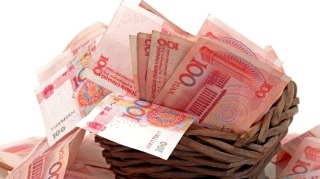
Here's how inclusion of China's RMB into the SDR will drive market reform further
Risks of large devaluation remain low at the moment.
The inclusion of the RMB in the Special Drawing Rights (SDR) will have both symbolic and practical implications for the domestic currency and financial systems, as well as the global system, said UOB.
Inclusion of China’s RMB into the SDR basket of currencies will be effective from 1 Oct 2016.
The research firm notes that while there are long term implications for the RMB as a reserve currency, this looks to be a non-event near term as little market impact is expected. However, the inclusion in the SDR, it said, will accelerate market reform process in China, which should see greater opening of the capital account as well as two-way capital flows over time.
Here's more from UOB:
Symbolically, the inclusion of RMB will raise its profile and can be seen as IMF’s endorsement of China’s rise as an economic and efforts in opening and reforming of its financial system. This means that the RMB should deserve similar status as other reserve currencies such as the US dollar and the euro. China has vowed to continue on these reforms efforts, by making its capital account and the RMB convertible during the 13th 5-year plan in 2016-2020. However, given the RMB’s low base and “newness”, it will take a long period of time to get anywhere close the US dollar’s dominant position.
On the other hand, IMF’s own standing globally would be strengthened by formally acknowledging the rise of China’s economic influence and the increasingly important role of RMB in the global financial markets.
Pragmatically, the SDR will a key catalyst to deepen financial market reforms in China and further the internationalization of RMB, as the usage and adoption of the currency rises. This will have a positive effect on the exchange rate, as the RMB’s status is now elevated to that of “reserve currency” along with other members in the SDR basket. Over time, central banks and other asset managers would need to adjust their portfolio allocation to include more RMB-denominated assets.
However, the shift in asset allocations would take time given the dearth of quality RMB assets and relatively restricted access to onshore financial markets. As such, the excitement, if any, on the RMB is likely to dissipate quickly and give way to more immediate concerns of the an interest rate hike at the upcoming US Fed FOMC meeting in mid-Dec 2016, which should keep the USD supported in the meantime.
As such, it is unlikely to see much significant near term price impact on the RMB post-SDR, though we reiterate our view that risks remain low for the RMB to see sharp or prolonged depreciation, as the Chinese authorities will be keen to maintain the confidence in the currency as well as SDR itself. The authorities also reiterated have often reiterated that there is no need for a large RMB devaluation and China will not depreciate its currency to boost exports
























 Advertise
Advertise






